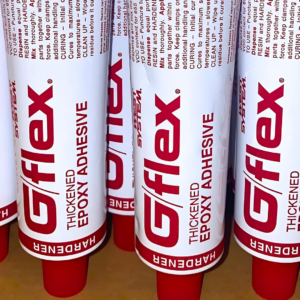Trade Secrets: How Can a Razor Blade Be Used in Your Workshop?
In the realm of DIY and home improvement, the saying “necessity is the mother of invention” rings true. We’ve all found ourselves in situations where we’ve had to improvise with the wrong tool. This usually happens because the right one has mysteriously disappeared. But what if you could repurpose some of the tools already in your workshop for a variety of tasks? One such tool is the unassuming razor blade, an unexpectedly versatile tool for epoxy applications.
1. The Mini-Spreader
When you’re in a pinch, you might need to apply caulks and thickened epoxies with precision. In such cases, a razor blade can serve as a mini-spreader. You might consider this as a last resort, but its effectiveness could surprise you.
2. The Surface Imperfection Filler
Have you ever noticed tiny pinholes and scratches on your workpiece? A razor blade can be just the tool you need for filling these isolated imperfections. This technique is particularly effective when you lay the blade at a low angle, almost flat, while spreading the putty. It allows for a smooth and even application.
3. The Cabinet Scraper
A sharp razor blade held on edge at a 90° angle to the surface can function as a cabinet scraper. This technique allows you to scrape off small imperfections like drips and dirt specks in cured or dried coatings. You can do this before you proceed to the buffing or final sanding stage.
4. The Window Cleaner
A sharp razor blade is the perfect tool for removing dried paint from windows. It’s a simple and effective method that can save you a lot of time and effort.
5. The Surface Clean-Up Tool
Single-edge razor blades can be modified for surface clean-up tasks. They can be used to remove cured epoxy and dried paint drips from various surfaces. These surfaces can include gelcoat and plastic laminates. The trick is to slightly dull the razor blade with 600-grit sandpaper before starting, rounding the corners at each end of the blade simultaneously.
6. The Fibreglass Cleaner
A dulled razor blade is also excellent for removing old bathtub caulk on fibreglass tub and shower surrounds without damaging the gel-coated surfaces. Always remember to test the dulled blade on an inconspicuous spot first, though, to verify that it won’t scratch the surface.
So there you have it – six innovative uses for a razor blade that could save you time and effort on your next boat project. These are just a few examples of how thinking outside the box and repurposing common tools can lead to surprising results. Special thanks to Tom Pawlak for his insightful ideas.
Have you subscribed to our FREE monthly newsletter? Sign up here!
For more trade secrets, check out the content below:
Working on a project? Share it with us! Click here…


